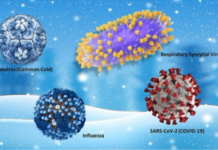It is evident that growing up in a neighborhood with safe and well-maintained parks, minimal discrimination, and financial stability would provide a less stressful childhood. On the other hand, neighborhoods lacking community spaces, experiencing violence, and grappling with poverty can create a higher-stress environment for children. Regrettably, systemic and structural problems like wealth disparity, residential segregation, obstacles to homeownership, and environmental injustices disproportionately affect neighborhoods where Black American adolescents reside. Consequently, Black American adolescents are more likely to be raised in the latter, more stressful scenario due to these inequalities and injustices.
The findings of a recent study conducted by Assistant Professor of Social Work Melissa Villodas suggest that the stress arising from neighborhood poverty and community violence has a detrimental impact on the mental health of Black American adolescents. This could be one of the factors contributing to the higher rates of suicidality observed among Black American adolescents compared to other racial or ethnic groups, as well as the increasing occurrence of mental health issues among racial minority youth. The study sheds light on the importance of addressing environmental stressors in these communities to improve the mental well-being of Black American adolescents and reduce the disparities in mental health outcomes among different racial and ethnic groups.
Melissa Villodas emphasized the necessity of implementing initiatives that foster healthy neighborhoods and provide local resources to support stress reduction and mental health for adolescents. By addressing the neighborhood environment’s impact on stress among Black American adolescents living in socioeconomically disadvantaged areas, these initiatives aim to enhance the lives of Black youth and promote their well-being. The review of existing research highlights the significance of understanding and mitigating the effects of neighborhood-related stressors on mental health to create more equitable and supportive environments for these adolescents.
The review found that four distinct aspects of the neighborhood environment have been examined in relation to Black American adolescent stress:
- perceived neighborhood environment, such as perceived levels of trust and safety;
- built neighborhood environment, such as parks and community centers;
- exposure to community violence, such as gang activity and drug use; and
- neighborhood disadvantage, such as poverty, racism, and discrimination.
The study identifies promising opportunities for mental health interventions that can tackle neighborhood-based stressors through community revitalization efforts. These interventions aim to create spaces where Black American adolescents experience reduced stress levels, such as parks, community centers, and libraries. By investing in these areas and transforming them into safe, welcoming, and resource-rich environments, it is possible to provide valuable support for the mental well-being of Black American adolescents. These community revitalization initiatives can play a crucial role in mitigating the negative impact of neighborhood stressors and fostering healthier, more supportive surroundings for these young individuals.
Examining the Influence of the Neighborhood Environment on Stress Among Black American Adolescents: A Scoping Review was published in Youth & Society in June 2023.
Source: George Mason University/Newswise
Image: Freepik



































